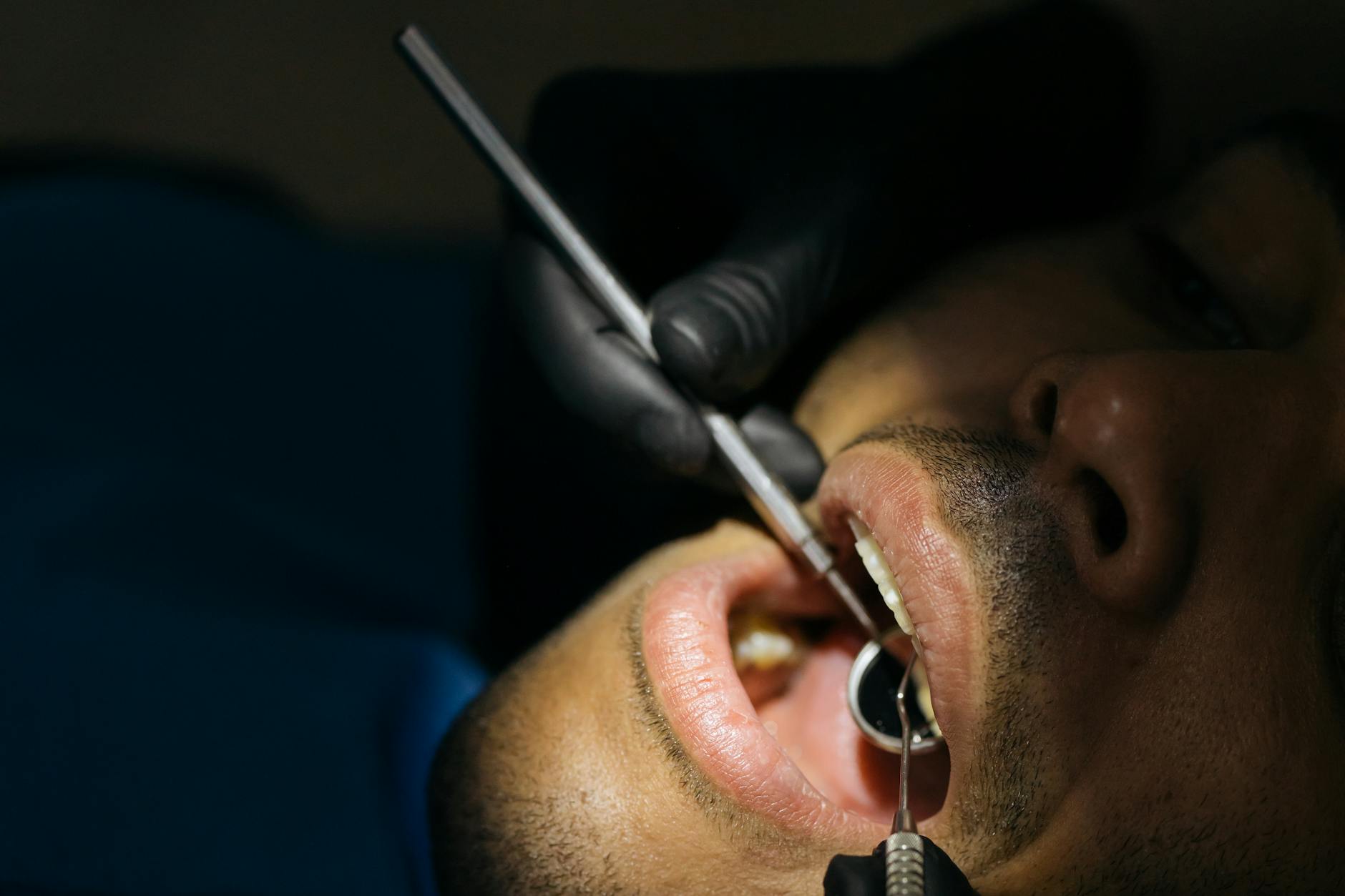(Heart Disease, Diabetes, and respiratory illnesses)
Periodontal (Gum) disease is an infection and inflammation of the tissue that holds teeth in place. It’s typically caused by poor brushing and flossing habits that allow plaque – a sticky film of bacteria- to build up on the teeth and harden thus, irritating the gums. It starts with swollen, red, and bleeding gums. If left untreated, it can spread to the bones surrounding the gums, making it painful to chew. In the worst cases, teeth may become loose or may need to be removed.
Periodontal disease symptoms may include:
- Reddish or purplish gums.
- Bleeding.
- Soreness.
- Bad breath (halitosis).
- Unpleasant taste.
- Pain when chewing.
- Gum recession (gums that pull away from your teeth).
- Loose teeth.
- A change in the way your teeth fit together.
Causes of periodontal disease
Buildup of dental plaque is the number 1 cause of periodontal disease. Plaque contains many different kinds of bacteria that can potentially infect your gums. That’s why you’re more likely to get gum disease if you have poor oral hygiene. In some people, genes play a role in gum disease by changing the way their immune system responds to bacteria.
Periodontal disease stages
Healthy gums are firm to touch. They don’t bleed or swell but periodontal disease can cause discolored (reddish or purplish), swollen, bleeding gums. Left untreated, gum disease can cause destruction of your underlying jawbone, leading to possible tooth loss.
The breakdown of tissues around your teeth happens gradually. In fact, most people don’t experience pain with gum disease — especially during the early stages. So, it’s important to know the warning signs.
There are four stages of gum disease:
1. Gingivitis. This is the earliest stage of gum disease. It starts with red, puffy gums that may bleed when you brush or floss. At this stage, there’s no bone loss. As a result, gingivitis is totally reversible with proper treatment.
2. Mild periodontitis. The bacteria have seeped beneath your gums, affecting the supporting bone. Your gums may pull away from your teeth, creating pockets around them. Plaque and bacteria like to hide in these pockets, where your toothbrush and floss can’t reach.
3. Moderate periodontitis. Left untreated, bacteria begin to erode the ligaments, soft tissues and bone that hold your teeth in place. You may notice bad breath and pus (infection) around your gum line. Some people develop pain at this stage.
4. Advanced periodontitis. As periodontal disease worsens, bone loss continues. This can cause your teeth to become loose and eventually fall out.

When treated early enough, gum disease is reversible. But if you’ve already lost bone around your teeth due to infection, the disease is too advanced to reverse. However, you can manage it with proper treatment and consistent, diligent oral hygiene.
The Link between Gum Disease and various diseases
1. Diabetes
Diabetes mellitus (DM) is a clinical syndrome, characterized by hyperglycemia, caused by inherited and/or acquired deficiency in insulin production and/or action. If one develops gum disease, the gums become inflamed, which in turn leads to higher blood glucose (blood sugar) levels, thus contributing to higher risk of diabetes.
2. Cardiovascular Disease
Inflammation from dental bacteria can lead to infection of the heart lining called endocarditis, this can trigger cardiovascular diseases and increase the risk of having a heart attack. Some research suggests that the more bacteria you have from gum-disease, the thicker your arteries may be making it difficult to pump blood to and from the heart.
3. Respiratory illness
The bacteria responsible for causing gum disease can make their way into a person’s lungs when they inhale causing inflammation that damages the respiratory system which increases the risk of developing various illnesses of the lungs, air sacs, and other internal structures leading to respiratory infections.
Periodontal disease is not a life-threatening condition. However, it might require you to seek treatment from various medical professionals when the bacteria from the infection spreads to your bloodstream to affect one’s overall health.
To help prevent gum disease:
- Brush your teeth twice a day with fluoride toothpaste.
- Floss or clean between your teeth once daily.
- Visit your dentist routinely for checkup and cleaning. Ensure to tell the dentist about any medical conditions you have and medications you take.
- Eat a well balanced diet.
- Quit smoking because it increases your risk for gum disease.
- Eat foods high in vitamins C and D, calcium, and antioxidants. These nutrients support gum health and reduce inflammation.
- Limit Sugary and Processed Foods. Sugar feeds mouth bacteria, leading to more plaque and gum issues. Reducing sugary snacks and drinks can improve your gum health.




